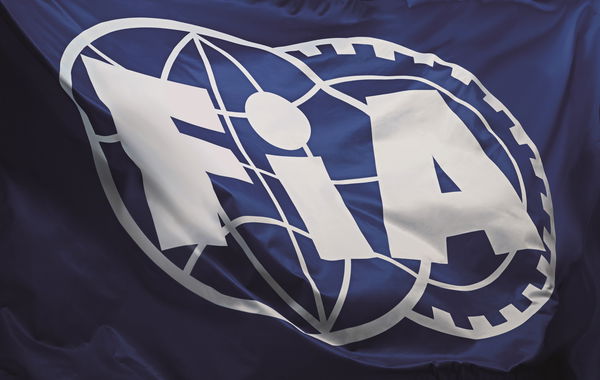
via Imago
FIA

via Imago
FIA
The FIA met in Paris on December 6th to discuss the regulations for the 2018 Formula One season and other series. The regulations covered racing series like Formula One, World Rally Championship, World Endurance Championship, World Rallycross Championship, Touring Cars, Formula 2, Formula 3, Formula E and other such series. Here we break down the 2018 Formula One regulations.
2018 Formula One Regulation Changes
Change in Penalty System
ADVERTISEMENT
Article continues below this ad
If a driver cops a penalty exceeding 15 grid places he will be required to start the race from the back of the grid. However, if more than one driver receives such a penalty they will be arranged at the back of the grid in the order in which the offences were committed. Last season, there was a lot of confusion regarding sorting the grid positions. For example, some drivers would be handed at least 30-35 place grid penalties. For a 20 strong grid, a 30 or 35-place grid penalty does seem ridiculous.
2018 Formula One Calendar Finalised

via Imago
Increased security at Interlagos
In the 2018 Formula One season, the calendar will feature 21 grand prix. Germany makes a return at Hockenheim and France also returns after a 9-year absence. However, the venue will be Le Castellet. Back in 2008, the French Grand Prix was held at Magny Cours. Also, a notable absence is the Sepang International Circuit. The Malaysian GP was dropped after the circuit authorities decided not to renew their contract.
Other changes include the Azerbaijan GP being moved up to the 4th race on the calendar in place of Russia. It is also worth noting that the World Council was presented with a report on the security incidents that occurred at the 2017 Brazilian Grand Prix. The FIA requested the Commercial Rights Holder (CRH) for the report. To that effect, the CRH recommended that the promoter retains an independent security expert.
The promoter is responsible for the security of the event. The security expert can evaluate and advise on security plans, implement a police reporting hub at the circuit and improves overall communication between the promoter security, police and F1 stakeholders. The World Council strongly urged the promoter to implement these recommendations. Their hope was to improve the situation ahead of next year’s event. The FIA also offered to participate in discussions with the local authorities and closely monitor the situation.
What’s the Bottom Line?
So where does this leave F1 in the grand scheme of things? All these technical rules are minor compared to the complete overhaul in 2021. But these regulations that have been introduced are still big enough to impact the upcoming season, in theory.
You Might be Wondering

via Imago
The HALO
Of course, another change will be the introduction of the cockpit protection device, also known as the HALO. The idea for the HALO had been floated since 2016 and throughout 2017, all the F1 teams conducted various tests. The structure weighs approximately 10 kg and has resulted in a weight limit increase from 728 kg to 733 kg. As a result, some teams who were already on the bubble in terms of weight limit will have a difficult time. They will have to lower the mass of current components by more than 5 kg to be able to run ballast next season, so there may some outfits slightly over the limit. Because of the weight increase, a lap time penalty of around 0.4 seconds is expected. Another point is the position of the device, its high-up position will adversely affect stability.
There is also the Aerodynamic impact to consider. Teams can combat this by possibly adding fins around the main Halo structure, which will make it more streamlined. Their positioning is limited to a maximum of 20 mm from the main Halo structure. The teams also have to bear in mind that they cannot infringe on helmet free volume and satisfying maximum distances from the car’s centre and reference planes.
Is This Crazy/Too Much?
Another restriction imposed for the 2018 Formula One season is the permitted oil consumption by engines. The consumption will be reduced from 0.9 litres to 0.6 litres per 100 km. This rule was applied in 2017 itself where any new ICE introduced from Monza onwards would have these restrictions. The aim was to reduce the amount of oil that is burned as fuel, especially during qualifying runs. the top 2 teams, Ferrari and Mercedes were the biggest beneficiaries of this. Fortunately, the performance loss would be minimal. Reports suggested that the technique provides an additional 5-10 bhp or up to 0.15s per lap.
It Gets Worse

via Imago
Mclaren and Renault were the biggest victims of reliability in 2017
Yet another technical change is the eduction of power unit elements of each component. For the 2018 Formula One Season, each team will be limited to 3 elements of each component. Some teams have been struggling to maintain the current allocation and this will be a big blow for them. The idea behind the rule change was to limit the costs of power units. While it sounds good and sustainable on paper, in practicality, chances are that the move could backfire. As seen in 2017, manufacturers were forced to spend more money to improve their reliability than what is saved by reducing unit production.
Here’s the Kicker

via Imago
The T-wing
One of the more controversial regulations in 2017 was the shark fin and T-Wing. Both were originally set to be banned for 2018, but the FIA overturned the ban for the fin. This was because teams were concerned about placing large numbers and/or names on the car. Another concern for them was the need for sponsorship space. The absence of the fin would result in sponsorship income being compromised.
The fin is helpful in providing stability when the car oversteers or understeers. The T-Wing’s main purpose was to act as downforce generators. It would also relieve the load on the rear for 2018. Additionally, the winglets above the rear crash structure, often referred to as ‘monkey seats’, will no longer feature next year. The FIA were worried about teams using exhaust blowing techniques for rear downforce gains.
ADVERTISEMENT
Article continues below this ad
Again, there will be a loss of rear downforce, but more importantly, the consistency of the rear wing will be lowered, as the possibility of airflow separation increases distinctly. Perhaps the team that will benefit most from this change will be Renault, considering the R.S.17 has not featured a monkey seat at all this year.
Tyre Rules

via Imago
2018 F1 tyres
Finally, the sporting regulations explicitly allow sets of tyres of the same specification to be mixed following qualifying. It will remain at the direction of the FIA technical delegate as to whether a tyre damaged in Q2 can be replaced for a top ten starter, so the new regulation cannot be applied here, where it would probably be most useful.
ADVERTISEMENT
Article continues below this ad
However, we could see teams using new tyres at the rear of the car, with slightly older ones at the front if, for instance, the track in question is rear-limited – this would allow the balance of the car to be kept closer to the optimum one as a stint progresses with differing wear rates at the front and rear.
ADVERTISEMENT
ADVERTISEMENT
ADVERTISEMENT
ADVERTISEMENT

